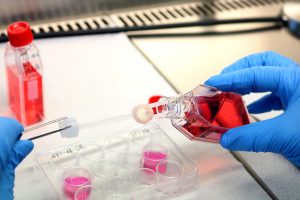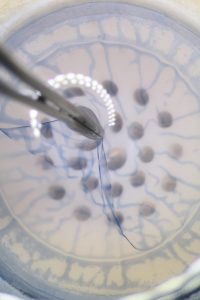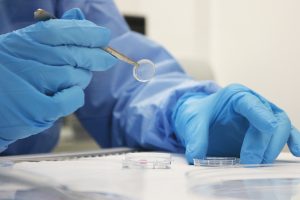Join a powerful, unprecedented alliance for better eye health for all.
Join IAPB-
Choose an alternate language here
Hanover/Germany – 3,029 donors or relatives consented to donate tissues such as cornea, heart valves, blood vessels and amnion (placenta) last year. Despite a decrease in donations during the first COVID-19 lockdown in Germany in spring, the German Society for Tissue Transplantation (DGFG) was able to maintain the high level of donations from the previous year. In total, the DGFG provided 6,268 tissue transplants to patients throughout Germany. Tissue donations promise confidence for a self-determined life.

41,327 notifications of potential donors were checked by the tissue donation coordinators of the DGFG for medical contraindications and other reasons for exclusion. 7,441 interviews with relatives (or living donors) resulted from this, in which the coordinators provided information about the possibility of tissue donation. While most countries in the EU have established an opt-out system in organ and tissue donation, Germany applies the extended consent solution (opt-in). Thus, tissue donation was approved in 3,029 cases (2019: 3,007). The consent rate for tissue donation was around 41 percent. From the donations that were carried out, 5,938 tissue preparations could be obtained for the care of patients throughout Germany.
Corneal transplantation: Gentle, lamellar surgical procedure increasingly in demand
In 2020, the DGFG was able to provide 3,962 patients with a corneal transplant to restore or maintain their vision. On average, around 7,000 corneal transplants are processed in Germany each year. “More than every second cornea is provided by the DGFG. We can now fulfil most requests for corneal transplants within a few weeks”, says Börgel.
53 per cent of transplants are requested for DMEK (Descemet Membrane Endothelial Keratoplasty) surgery. In this gentle surgical procedure, doctors replace only a thin layer of the cornea – a so-called lamella – so that the patient’s vision recovers much faster and the risk of infection remains minimal. Specially developed for this transplantation procedure, the DGFG provided 487 pre-prepared corneal lamella (LaMEK) (2019: 381).

In 2021, DGFG expects the approval of an innovation in the field of corneal surgery: Preloaded-LaMEK eliminates the preparation of the corneal lamella shortly before transplantation and the graft is delivered in a cartridge for immediate insertion into the cornea. Treatment time, discarding of the graft as a result of preparation errors in the OR, and stress on the cells of the graft are thus reduced. The preparation was developed by Professor Dr. Peter Szurman, Chief Physician at the Sulzbach Eye Clinic, in collaboration with the DGFG.
A gift to life: Placenta donation helps people to receive therapy without trauma
In 2020, the DGFG was able to realise 20 placenta donations in the context of planned caesarean births. The so-called amniotic membrane, the inner skin of the sac surrounding the fetus, is extracted from the placenta. Doctors can use the wafer-thin membrane in gynecological surgery, oral and maxillofacial surgery and as a temporary skin substitute for thermal injuries and wound healing disorders.

Network structure ensures patient care even in the crisis
The fact that patient care could be guaranteed even in the difficult months of March to May is due to the nationwide network organization of DGFG and partners. The cooperating forces are 50 tissue donation coordinators, more than 100 donor hospitals and 13 tissue banks: numerous university hospitals, municipal and denominational hospitals, but also large hospital groups report potential tissue donors to the DGFG.
The coordinators support the clinics where necessary: on site – during donor screening, the interview with the relatives, the tissue collection and in clarifying data protection issues, for example. After removal, the tissues are assigned to a tissue bank. This network organization is essential for tissue medicine. Unlike organ donation, tissue is not transplanted immediately. They are first processed into transplants in a tissue bank and stored until they are passed on to transplantation centers throughout Germany.
This network organization allows high demand for tissue transplants in a hospital to be met despite low regional donation. Again, tissue donations do not have to be rejected due to acute lack of capacity in the nearest tissue bank. Conversely, transplants are not discarded when local demand is below available tissues. Corneas can be stored for a maximum of 34 days before transplantation. When many hospitals curtailed their operations during the initial lockdown and subsequently cancelled corneal transplants at short notice, tissue facilities were faced with planning, economic, and ethical challenges. The DGFG network was able to respond to the decreased transplant capacity while providing emergency care. “The network enables optimal patient care and the least possible discard of tissue donations. This is not just about cost-effectiveness. This is about safe care through solidarity and working in a network. In this way, everyone has a fair chance of care – even in times of crisis!”, says Martin Börgel.